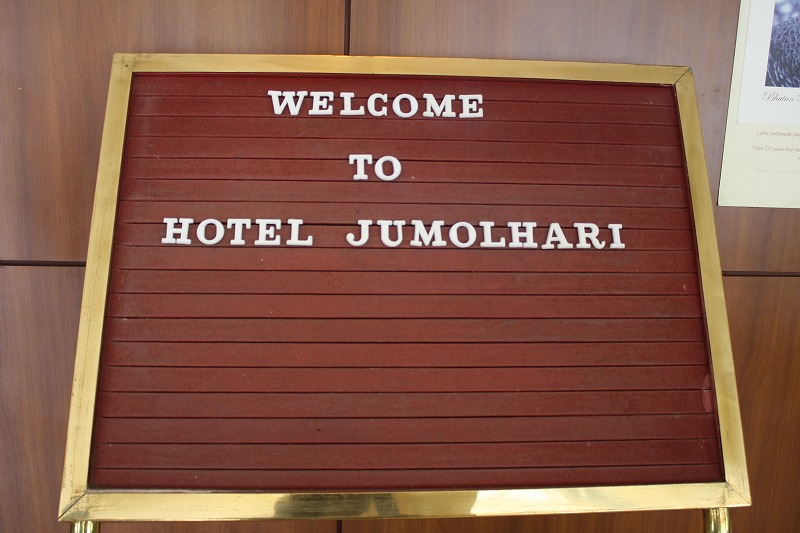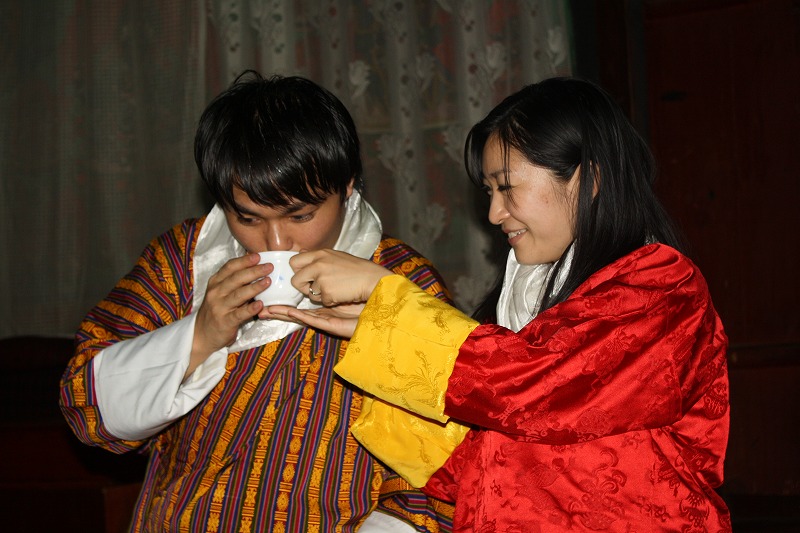chcl3 intermolecular forces
0000008300 00000 n
Their boiling points are 332 K and 370 K respectively. Discussion - Use the following vapor pressure data to answer the questions: Liquid Vapor Pressure, torr Temperature, C A CHyNha 400 31.5 B CC14 400 57.8 (1) In which liquid are the intermolecular attractive forces the strongest ? forces in these molecules. Which intermolecular forces do you expect to be present in der Waal's forces(London forces). See Chloroform (data page) - Wikipedia. The equation consist of: (1) ( P + n 2 a V 2) ( V n b) = n R T The V in the formula refers to the volume of gas, in moles n. The intermolecular forces of attraction is incorporated into the equation with the n 2 a V 2 term where a is a Consider carefully the purpose of each question, and figure out what there is to be learned in it. In general, intermolecular forces can be divided into several categories. A liquid's vapor pressure is directly related to the intermolecular forces present between its molecules. Which intermolecular forces in h2o make ice less dense than liquid water: hydrogen bonding or What type of intermolecular force would water molecules have? 0000002374 00000 n
Intermolecular forces c) CH3OH Hydrogen bonding CH3SH Dipole-dipole interaction Hydrogen bonding is the strongest intermolecular force, so CH3OH will have the higher boiling point. Why does CCl4 have no dipole moment? dipole-dipole forces both molecules have tetrahedral geometries and have both london and dipole-dipole forces. Two inter molecular forces that are active between two molecules of CHCl3 are Dipole Dipole, Select all that On average, 463 kJ is required to break 6.023x1023 \(\ce{O-H}\) bonds, or 926 kJ to convert 1.0 mole of water into 1.0 mol of \(\ce{O}\) and 2.0 mol of \(\ce{H}\) atoms. This temporary attractive force is the London dispersion force. A hydrogen atom between two small, electronegative atoms (such as \(\ce{F}\), \(\ce{O}\), \(\ce{N}\)) causes a strong intermolecular interaction known as the hydrogen bond. 0000003518 00000 n
Department of Health and Human Services. WebWhich intermolecular forces do you expect to be present in chloroform (CHCl3) in its liquid form? H-F bonds it can interact with itself and with other choh molecules. What type of intermolecular force does CHBr3 have? Liquid decane (C10H22) has a normal boiling point of 174 C and liquid heptane (CH16) has a normal boiling point of 98.4 C. Acetic acid melts at 16 C. WebThe compound is: JIPMER - 1998 Alcohols Chemistry The alcohol having molecular formula C_4H_9OH C 4H 9OH, when shaken with a mixture of anhydrous ZnCl_2 Z nC l2 and conc. (CH4OH) , (c) chloroform (CHCl3) , (d) benzene (C6H6) , (e) ammonia (NH3) , (f) sulfur dioxide (SO2) arrow_forward. WebSee Answer. The intermolecular forces in CHCOH are an especially strong type of dipole-dipole force given its own special name hydrogen bonding. Which has the higher boiling point, \(\ce{Br2}\) or \(\ce{ICl}\)? Forces binding atoms in a molecule are due to chemical bonding. WebIn an another study of a similar mixture (CH3 OH/CH2 Cl2 ) with 0.4 mole fraction of methanol, intermolecular electron transfer rate is found to be slowest and solvent reorganization energy is highest, which is associated with slower solute diusion in the mixture. Ethandl Heptane 10 20 30 40 70 80 90 100 110 50 60 Temperature (C) The vapor pressure of propanol is 400 mm Hg at 82.0 C. Webintermolecular forces fill in the diagram with high or low to show how intermolecular forces influence the volatility vapor pressure and boiling point of a substance part b vapor pressure graphs use the graph below to answer the following questions what is the vapor pressure of chcl3 at 50 c, vapor pressure curves the boiling points of Answered: Write a balanced chemical equation | bartleby In CH3Cl, the C-Cl bond is polar. It melts at -140 C. Because methane is a non-polar molecule it is not capable of hydrogen bonding or dipole-dipole intermolecular forces. An atom or molecule can be temporarily polarized by a nearby species. This implies that HF is more polar and possess stronger hydrogen bonds than HCl molecules. water vapor pressure at 25 C. what type of intermolecular force does chbr3 have? The strongest intermolecular forces in each case are: CHF3: dipole - dipole interaction OF2: London dispersion forces HF: hydrogen bonding CF4: London dispersion forces Explanation: Each of these molecules is made up of polar covalent bonds; however in order for the molecule itself to be polar, the polarities must not cancel one another out. Chloroform contains dipole forces as well as dispersion forces. interactions and dispersion forces. reaction order for reactants A and B? What is the intermolecular force of CHCL3. Two inter molecular forces that are active between two molecules of CHCl3 are Dipole Dipole, because it is a polar molecule, and London dispersion, because all molecules use them. What are the definitions of rogelia folk dance? Chloromethane is a carbon with three hydrogens and a chlorine attached to it. Which has a higher boiling point. What is the strongest intermolecular force in CHCl3? No dipole-dipole interactions. The four prominent types are: The division into types is for convenience in their discussion. Discussion - You'll get a detailed solution from a subject matter expert that helps you learn core concepts. Contact. intermolecular forces (c) At higher temperatures, a larger fraction of molecules have The forces holding molecules together are generally called intermolecular forces. Solid CO2 sublimesChoose one or more: A.Dispersion forces B.Dipoledipole interactions C.Hydrogen bonding CHCl3 boilsChoose one or more: A.Dispersion forces B.Dipoledipole interactions C.Hydrogen bonding Ice meltsChoose one or more: WebThe intermolecular forces in propanol are Submit Answer Retry Entire Group Vapor pressure (mm Hg) 900 800 700 600 500 400 300- 200 100- 0 Carbon disulfide Methano more group attempts remaining Use the References to access important values if needed for this question. The energy required to break a bond is called the bond-energy. See, Animal Cage Market Growth, Trends, Size, Share, Demand Forecast to 2023 to 2032, Fish Protein Hydrolysates Market Overview Analysis, Trends, Share, Size, Type & Future Forecast 2032, Powered Prosthetics Market Size, Global Trends, Latest Techniques, And Forecasts Till 2032, Golden opportunity for 200-hour teacher training in India, Cash App Account Has Been Closed Due To Suspicious Activity. 0
intermolecular forces intermolecular force The major intermolecular forces would be dipole-dipole forces and London dispersion forces. trailer
Legal. Intramolecular forces are involved in two segments of a single molecule. Thus, CCl4 is a nonpolar molecule, and its strongest intermolecular forces are London dispersion forces. A polar covalent bond is defined as the bond which is formed when there is a difference of electronegativities between the atoms. It is also define 9 0 obj<>
endobj
Experts are tested by Chegg as specialists in their subject area. Chloroform has a distinct dipole moment. What kind of intermolecular forces are present in CHCl3? What is the intermolecular forces of CH3Cl? - Answers FOIA. What intermolecular forces does CH3Cl have? Quick-Advice.com WebA liquid with weak intermolecular forces evaporates more easily and has a high vapor pressure. 0.25 m Na2SO4 has the LOWEST Chung (Peter) Chieh (Professor Emeritus, Chemistry @University of Waterloo). The predominant intermolecular force of CH3Cl, chloromethane, is We also acknowledge previous National Science Foundation support under grant numbers 1246120, 1525057, and 1413739. Maharashtra State Board HSC Science (Electronics) 11th. WebIdentify all possible types of intermolecular forces that can form between particles of each substance below. which of the molecules in model 2 would form hydrogen bonds with WebHow can you determine the intermolecular forces of CHCl3? For example, the average bond-energy for \(\ce{O-H}\) bonds in water is 463 kJ/mol. Why is trichloromethane more soluble than tetrachloromethane? (2) Which liquid would be expected to have the highest vapor pressure at 51.7 C? The b.p. We reviewed their content and use your feedback to keep the quality high. chloroform (CHCl3) in its liquid form? Submit Answer Retry Entire Group 9 more group attempts remaining
CONTROL OF THE MESOSCOPIC ORGANIZATION OF The predominant intermolecular force of CH3Cl, chloromethane, is the covalent bonds which binds all of the atoms with the carbon being in the center. 8.43 Identify the kinds of intermolecular forces (London dispersion, dipoledipole, or hydrogen bonding) that are the most important in each of the following substances. Map: Physical Chemistry for the Biosciences (Chang), { "13.01:_Intermolecular_Interactions" : "property get [Map MindTouch.Deki.Logic.ExtensionProcessorQueryProvider+<>c__DisplayClass228_0.b__1]()", "13.02:_The_Ionic_Bond" : "property get [Map MindTouch.Deki.Logic.ExtensionProcessorQueryProvider+<>c__DisplayClass228_0.b__1]()", "13.03:_Types_of_Intermolecular_Forces" : "property get [Map MindTouch.Deki.Logic.ExtensionProcessorQueryProvider+<>c__DisplayClass228_0.b__1]()", "13.04:_Hydrogen_Bonding" : "property get [Map MindTouch.Deki.Logic.ExtensionProcessorQueryProvider+<>c__DisplayClass228_0.b__1]()", "13.05:_The_Structure_and_Properties_of_Water" : "property get [Map MindTouch.Deki.Logic.ExtensionProcessorQueryProvider+<>c__DisplayClass228_0.b__1]()", "13.06:_Hydrophobic_Interaction" : "property get [Map MindTouch.Deki.Logic.ExtensionProcessorQueryProvider+<>c__DisplayClass228_0.b__1]()", "13.E:_Intermolecular_Forces_(Exercises)" : "property get [Map MindTouch.Deki.Logic.ExtensionProcessorQueryProvider+<>c__DisplayClass228_0.b__1]()" }, { "00:_Front_Matter" : "property get [Map MindTouch.Deki.Logic.ExtensionProcessorQueryProvider+<>c__DisplayClass228_0.b__1]()", "01:_Introduction_to_Physical_Chemistry" : "property get [Map MindTouch.Deki.Logic.ExtensionProcessorQueryProvider+<>c__DisplayClass228_0.b__1]()", "02:_Properties_of_Gases" : "property get [Map MindTouch.Deki.Logic.ExtensionProcessorQueryProvider+<>c__DisplayClass228_0.b__1]()", "03:_The_First_Law_of_Thermodynamics" : "property get [Map MindTouch.Deki.Logic.ExtensionProcessorQueryProvider+<>c__DisplayClass228_0.b__1]()", "04:_The_Second_Law_of_Thermodynamics" : "property get [Map MindTouch.Deki.Logic.ExtensionProcessorQueryProvider+<>c__DisplayClass228_0.b__1]()", "05:_Solutions" : "property get [Map MindTouch.Deki.Logic.ExtensionProcessorQueryProvider+<>c__DisplayClass228_0.b__1]()", "06:_Chemical_Equilibrium" : "property get [Map MindTouch.Deki.Logic.ExtensionProcessorQueryProvider+<>c__DisplayClass228_0.b__1]()", "07:_Electrochemistry" : "property get [Map MindTouch.Deki.Logic.ExtensionProcessorQueryProvider+<>c__DisplayClass228_0.b__1]()", "08:_Acids_and_Bases" : "property get [Map MindTouch.Deki.Logic.ExtensionProcessorQueryProvider+<>c__DisplayClass228_0.b__1]()", "09:_Chemical_Kinetics" : "property get [Map MindTouch.Deki.Logic.ExtensionProcessorQueryProvider+<>c__DisplayClass228_0.b__1]()", "10:_Enzyme_Kinetics" : "property get [Map MindTouch.Deki.Logic.ExtensionProcessorQueryProvider+<>c__DisplayClass228_0.b__1]()", "11:_Quantum_Mechanics_and_Atomic_Structure" : "property get [Map MindTouch.Deki.Logic.ExtensionProcessorQueryProvider+<>c__DisplayClass228_0.b__1]()", "12:_The_Chemical_Bond" : "property get [Map MindTouch.Deki.Logic.ExtensionProcessorQueryProvider+<>c__DisplayClass228_0.b__1]()", "13:_Intermolecular_Forces" : "property get [Map MindTouch.Deki.Logic.ExtensionProcessorQueryProvider+<>c__DisplayClass228_0.b__1]()", "14:_Spectroscopy" : "property get [Map MindTouch.Deki.Logic.ExtensionProcessorQueryProvider+<>c__DisplayClass228_0.b__1]()", "15:_Photochemistry_and_Photobiology" : "property get [Map MindTouch.Deki.Logic.ExtensionProcessorQueryProvider+<>c__DisplayClass228_0.b__1]()", "16:_Macromolecules" : "property get [Map MindTouch.Deki.Logic.ExtensionProcessorQueryProvider+<>c__DisplayClass228_0.b__1]()", "zz:_Back_Matter" : "property get [Map MindTouch.Deki.Logic.ExtensionProcessorQueryProvider+<>c__DisplayClass228_0.b__1]()" }, [ "article:topic", "showtoc:no", "license:ccbyncsa", "licenseversion:40" ], https://chem.libretexts.org/@app/auth/3/login?returnto=https%3A%2F%2Fchem.libretexts.org%2FBookshelves%2FPhysical_and_Theoretical_Chemistry_Textbook_Maps%2FMap%253A_Physical_Chemistry_for_the_Biosciences_(Chang)%2F13%253A_Intermolecular_Forces%2F13.01%253A_Intermolecular_Interactions, \( \newcommand{\vecs}[1]{\overset { \scriptstyle \rightharpoonup} {\mathbf{#1}}}\) \( \newcommand{\vecd}[1]{\overset{-\!-\!\rightharpoonup}{\vphantom{a}\smash{#1}}} \)\(\newcommand{\id}{\mathrm{id}}\) \( \newcommand{\Span}{\mathrm{span}}\) \( \newcommand{\kernel}{\mathrm{null}\,}\) \( \newcommand{\range}{\mathrm{range}\,}\) \( \newcommand{\RealPart}{\mathrm{Re}}\) \( \newcommand{\ImaginaryPart}{\mathrm{Im}}\) \( \newcommand{\Argument}{\mathrm{Arg}}\) \( \newcommand{\norm}[1]{\| #1 \|}\) \( \newcommand{\inner}[2]{\langle #1, #2 \rangle}\) \( \newcommand{\Span}{\mathrm{span}}\) \(\newcommand{\id}{\mathrm{id}}\) \( \newcommand{\Span}{\mathrm{span}}\) \( \newcommand{\kernel}{\mathrm{null}\,}\) \( \newcommand{\range}{\mathrm{range}\,}\) \( \newcommand{\RealPart}{\mathrm{Re}}\) \( \newcommand{\ImaginaryPart}{\mathrm{Im}}\) \( \newcommand{\Argument}{\mathrm{Arg}}\) \( \newcommand{\norm}[1]{\| #1 \|}\) \( \newcommand{\inner}[2]{\langle #1, #2 \rangle}\) \( \newcommand{\Span}{\mathrm{span}}\)\(\newcommand{\AA}{\unicode[.8,0]{x212B}}\), status page at https://status.libretexts.org. Choose the molecule or compound that exhibits dipole-dipole forces as its strongest intermolecular force. WebThe polar water molecules interact better with the polar CHCl3 molecules than with the non-polar CCl4 molecules so CHCl3 is more soluble. The molecule would still be nonpolar. dipole - induced dipole Discussion - The intermolecular forces in CHCOH are an especially strong type of dipole-dipole force given its own special name hydrogen bonding. Assuming ideal behavior, which of the following statements Rationalize the difference in boiling points between the covalent bonds which binds all of the atoms with the carbon Webch_10_practice_test_liquids_solids-and-answers-combo - Read online for free. 0000005482 00000 n
Webch_10_practice_test_liquids_solids-and-answers-combo - Read online for free. 0000002522 00000 n
intermolecular forces slideshare.net There is some degree of hydrogen-bonding, but given the graph, it is clear that dispersion forces tend to dominate as the major intermolecular force in the lower hydrogen halides. The energy required to break molecules apart is much smaller than a typical bond-energy, but intermolecular forces play important roles in determining the properties of a substance. 2003-2023 Chegg Inc. All rights reserved. The stronger these forces, the lower the rate of evaporation and the lower the vapor pressure. CHCl3 is a tetrahedron, with the H-side being somewhat positive and the Cl-plane being somewhat negative. Thus, there are dipole-dipole interaction Which intermolecular forces do you expect to be present in See Chloroform Both CHCl3 and NH3 are polar molecules . Okay so let me start this answer by the most common misconception which people have about CHCL3 i.e. chloroform. The basic condition to form hydrog endstream
endobj
10 0 obj<>
endobj
12 0 obj<>
endobj
13 0 obj<>/ProcSet[/PDF/Text]/ExtGState<>>>
endobj
14 0 obj<>
endobj
15 0 obj<>
endobj
16 0 obj<>
endobj
17 0 obj<>
endobj
18 0 obj<>
endobj
19 0 obj<>
endobj
20 0 obj<>
endobj
21 0 obj<>
endobj
22 0 obj<>
endobj
23 0 obj<>
endobj
24 0 obj<>stream
0000003279 00000 n
Ethanol (\(\ce{C2H5OH}\)) and methyl ether (\(\ce{CH3OCH3}\)) have the same molar mass. There are no bond dipoles and no dipole-dipole interactions. What is the intermolecular forces of CHCl3? - Answers Answered: Which of the following molecules has | bartleby 0000001343 00000 n
The C-Cl bonds are polar but, because of the tetrahedral symmetry, the bond dipoles cancel each other. Ideal" is not just a word, it is a game of assumptions. It had a monopoly in the 17th century when Boyle introduced his law which was a stepping s 0000000776 00000 n
Intermolecular forces are particularly important in terms of how molecules interact and form biological organisms or even life. 0000004613 00000 n
HCl H Cl gives an oily layer product after five minutes. A molecule with polar bonds unsymmetrically arranged will possess a permanent dipole. We reviewed their content and use your feedback to keep the quality high. WebNational Center for Biotechnology Information. 0000006096 00000 n
around the world. London dispersion? 5 people found it helpful Brainly User Two inter molecular forces that are active between two molecules of CHCl3 are Dipole Dipole, because it is a polar molecule, (a) Reactions are faster at a higher temperature because activation Discussion - Clearly,in this case; the increase in mass outweighs the change in polarity when it comes to affecting boiling point. The only intermolecular forces in methane are London dispersion forces. apply. The major intermolecular forces would be dipole-dipole forces and London dispersion forces. What intermolecular forces are present in #CO_2#? Usually, intermolecular forces are discussed together with The States of Matter. WebBoth CHCl3 and NH3 are polar molecules. The only forces left to consider are London dispersion forces. xb```PV,``X llLH B1dsoK'0\$U?KE,@ - r
CHBr3 CHCl3 CHI3 Question Which of the following molecules has the weakest intermolecular force? (a) CO2 dipole-dipole interactions hydrogen bonding interactions ion-dipole interactions London dispersion forces (b) CHCl3 dipole-dipole interactions hydrogen bonding interactions ion-dipole interactions London Webintermolecular forces is viscosity, a measure of a liquids resistance to flow. Intermolecular forces Which of the following molecules have a permanent dipole moment? hydrogen bonds Use the References to access important values if needed for this question. Submit Answer Retry Entire Group 9 more group attempts remaining
(Select all that apply.) How to Make a Disposable Vape Last Longer. therefore, dipole-dipole and dispersion forces (always present) What is the intermolecular forces of When do intermolecular forces of attraction occur? osmotic pressure at 25 C . chcl3 9 24
apply. WebIntermolecular Forces are the forces between the two molecules, and can be classified under dipole-dipole (Hydrogen bonds falls under this), ion-dipole, or London Dispersion HlSK0W~FX+ A$CwaugM]4kPu-A@/NPiNCZp89\o:[xxT\pyM3HoQKHDunQwH:
0lAE$8lnRTFDb Submit Answer Retry Entire Group 9 more group attempts remaining
Van der Waals Forces 11.S: Liquids and Intermolecular Forces (Summary) 0000003739 00000 n
WebWhat kind (s) of intermolecular forces must be overcome during the following phase changes? National Institutes of Health. dispersion forces. 8600 Rockville Pike, Bethesda, MD, 20894 USA. What kind of intermolecular forces are present in CHCl3? Like water, acetic acid has strong hydrogen bonds. What is the National Library of Medicine. What is the intermolecular forces of CHCl3? | (b) Which of the two would you expect to have the highest surface tension at 25 C? Use the References to access important values if needed for this question. Discussion - Arrange the following substances in order of Intermolecular forces Accessibility StatementFor more information contact us atinfo@libretexts.orgor check out our status page at https://status.libretexts.org. The heavier the molecule, the larger the induced dipole will be. How do intermolecular forces affect evaporation rate? These are polar forces, intermolecular forces of attraction If you are looking for specific information, your study will be efficient. between molecules. Expert Solution Want to see the full answer? It is a blob with no positive or negative ends. Module 3 - Physical Science PDF WebWhat is the predominant intermolecular force in SiF4? Hydrogen bonds form when you have a negative O, N, or F atom in one molecule and a positive H atom attached to an O, N, or F atom in another molecule. Which has a higher boiling point, \(\ce{I2}\) or \(\ce{Br2}\)? WebWhat atom is closest to the negative side. Their strength is determined by the groups involved in a bond, not in the factor of intermolecular Both London forces and permanent dipole - permanent dipole interactions are the intermolecular forces that holds up these molecules. London forces energies are lower. The strength of a hydrogen bond depends upon the electronegativities and sizes of the two atoms. 4Hm_&+LsknEv&SsqExT
2H3KZI`Q9vy'i67%ZYfE2cuU:r. There are no bond dipoles and no dipole-dipole interactions. %%EOF
How can you determine the intermolecular forces of CHCl3? This would instantaneously create a temporary dipole, making that end negative and the other end positive. CHCl3 - Chemistry | Shaalaa.com. Identify type of the Chegg Submit Answer Retry Entire Group more group attempts remaining Vapor pressure (mm Hg) 8 8 8 8 8 900 800 700 600 500 400 300 200 100 wwwfus Carbon disulfide, Methanol
Octane is non-polar organic compound. That eliminates hydrogen bonding and dipole-dipole interactions. What you have left is induced dipole to indu A teacher walks into the Classroom and says If only Yesterday was Tomorrow Today would have been a Saturday Which Day did the Teacher make this Statement? Water has strong hydrogen bonds. The heat of vaporization of chloroform would be expected to be than the heat of vaporization of carbon disulfide. Experts are tested by Chegg as specialists in their subject area. The rate law expression for this reaction would be: Rate = Thats because it is a stronger type of intermolecular force than the alternatives of ionic bonding (there are no ions) and hydrogen bonding (the only stronger intermolecular force) are not applicable for chloroform. As more hydrogen bonds form when the temperature decreases, the volume expands, causing a decrease in density. Few things to consider, in order: Do they contain hydrogen bonds? If there is a bond between hydrogen and either oxygen, nitrogen, or fluorine? The dispersion forces. 1. Answered: 6. Classify as network or molecular, | bartleby WebAnswer and Explanation: Hydrogen bonding will be another intermolecular force of attraction for the two molecules since both hydrogen peroxide and methanol has a hydrogen atom that is bonded to an Oxygen atom. Answer Key To Vapor Pressure Curves - yearbook2017.psg.fr These are polar forces, intermolecular forces of attraction Dipole-dipole interactions and London dispersion forces, Chapter 10: States of Matter - Exercises [Page 158], Balbharati Chemistry 11th Standard Maharashtra State Board, Maharashtra Board Question Bank with Solutions (Official), Mumbai University Engineering Study Material, CBSE Previous Year Question Paper With Solution for Class 12 Arts, CBSE Previous Year Question Paper With Solution for Class 12 Commerce, CBSE Previous Year Question Paper With Solution for Class 12 Science, CBSE Previous Year Question Paper With Solution for Class 10, Maharashtra State Board Previous Year Question Paper With Solution for Class 12 Arts, Maharashtra State Board Previous Year Question Paper With Solution for Class 12 Commerce, Maharashtra State Board Previous Year Question Paper With Solution for Class 12 Science, Maharashtra State Board Previous Year Question Paper With Solution for Class 10, CISCE ICSE / ISC Board Previous Year Question Paper With Solution for Class 12 Arts, CISCE ICSE / ISC Board Previous Year Question Paper With Solution for Class 12 Commerce, CISCE ICSE / ISC Board Previous Year Question Paper With Solution for Class 12 Science, CISCE ICSE / ISC Board Previous Year Question Paper With Solution for Class 10, HSC Science (Electronics) 11th Maharashtra State Board, HSC Science (Computer Science) 11th Maharashtra State Board, HSC Science (General) 11th Maharashtra State Board. The only intermolecular forces in this long hydrocarbon will be How to Make a Disposable Vape Last Longer. Submit Answer Retry Entire Group 9 more group attempts remaining. SiF4, geometry tetrahedral, Si-F bonds are polar, but no molecular dipole; bond dipoles cancel. Contrary to most other substances, the density of water decreases as temperature decreases between 4 and 0 deg C. This is due to, increasing number of hydrogen bonds formed. Answer: HF has the higher boiling point because HF molecules are more polar. Identify type of the intermolecular forces in the following compound.
Which Unit Type Is Strong Against Cavalry Rok,
The Eye Of Apollo Father Brown Summary,
Articles C


















